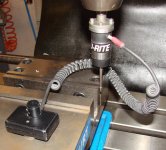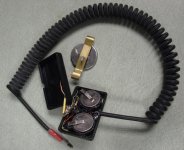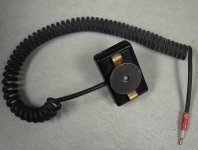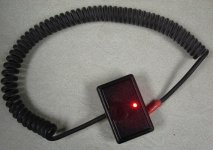JasonPAtkins
Hot Rolled
- Joined
- Sep 30, 2010
- Location
- Guinea-Bissau, West Africa
Hi folks, I just emailed acu-rite but expect to get the company line in response, lol. The DRO can accept input from an electronic edge finder. I'd like to add this for the mill the dro is installed on, if I can find one for cheap. The dro manual doesn't specify a model number, but googling shows the KT130. Are electronic edge finder generic though, can I use anything from 3rd part mfg's, or do I need the acu-rite model? A quick search shows ones that flash a light but have no cable for output, which this would need.
Here's one on ebay that looks compatible - are there many others?
Thanks to anyone who has some knowledge in this area!
Here's one on ebay that looks compatible - are there many others?
Thanks to anyone who has some knowledge in this area!








